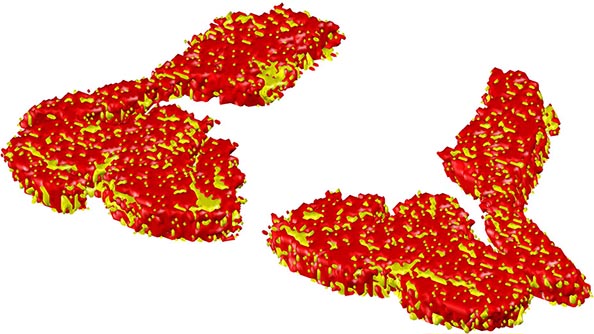As a Matter of Fat: new tool predicts falls and fractures in older persons
Due to the rapidly increasing ageing population, many chronic diseases are more commonly seen in older Australians. Osteopenia/osteoporosis (bone loss) and sarcopenia (muscle loss) affect two in three older Australians, placing significant burden on the individual as well as more widely across public health domains.
Research shows that osteosarcopenia associates with fat infiltration of muscle and bone, leading to a higher risk of fractures and falls, and is associated with chronic kidney failure, vitamin D deficiency, and in men, loss of testosterone. Osteosarcopenia is also associated with significant physical disability, representing a huge threat to loss of independence in later life. Therefore, accurate diagnostic methods for this condition are urgently needed.

The Department of Medicine-Western Health (University of Melbourne) and the Australian Institute for Musculoskeletal Science (AIMSS) are leading osteosarcopenia research worldwide. The imaging team led by Dr Ebrahim Bani Hassan and Mr Mahdi Emani (Biomedical Engineer) focuses on developing new diagnostic tools for osteosarcopenia using innovative approaches to analyse images obtained via usual techniques such as CT scans and densitometries.
Instead of just looking at the amount of muscle and bone in their participants, the team looked at this condition from a completely novel approach. The investigators developed and validated a new tool, known as Tissue CompassTM, which in just seconds quantifies the fat, bone and muscle content in those tissues using CT scan images of the proximal legs.
Their results were presented at the recent World Congress of Osteoporosis organised by the International Osteoporosis Foundation where the authors reported that Tissue CompassTM was an easier, faster and more consistent tool to quantify musculoskeletal tissues and their components than usual image analyses techniques. The method showed excellent to perfect correlation and agreement with the leading image analysis software and excellent correlation in histomorphometric validation.
Australia’s leading expert on the condition and senior author of this study, Professor Gustavo Duque, says that clinicians are often ignorant of the condition thus we need to increase awareness of it, and also provide them with accurate diagnostic methods that would trigger evidence-based and prompt interventions.
The team is now testing this method in more than 1,000 participants of the Geelong Osteoporosis Study. This will complete the validation of Tissue CompassTM in humans, which will become a diagnostic tool for osteosarcopenia in the near future.